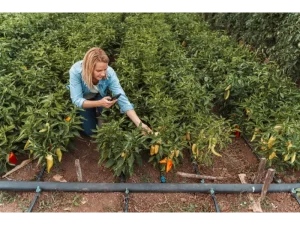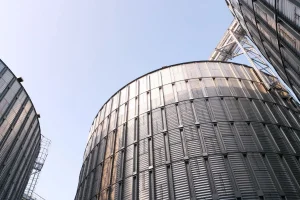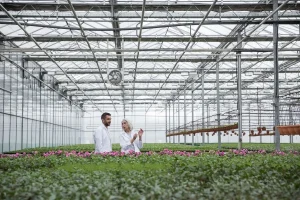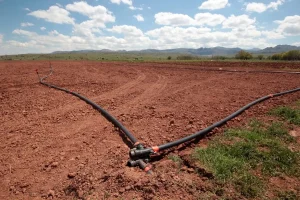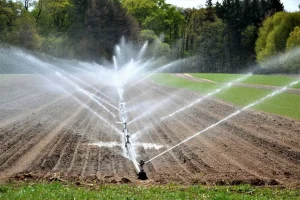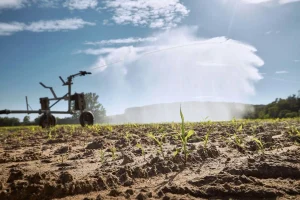Netafim greenhouse technologies ensure efficiency and resource savings in modern agriculture. In addition, climate control systems allow for the balancing of temperature and humidity inside the greenhouse. As a result, plants grow under ideal conditions and product quality can be improved. This optimizes water and energy usage and reduces costs. In this case, drip irrigation solutions can deliver water to plants in a precise manner. Furthermore, by integrating fertilization systems, nutrients can be delivered at the right time. This accelerates growth and shortens harvest times. This reduces the need for pesticides and supports sustainable production. In this case, automation systems can reduce labor requirements and simplify processes. Furthermore, thanks to sensors, greenhouse data can be monitored and analyzed in real-time. This enables producers to make informed decisions and minimize risks. This increases efficiency and significantly reduces losses.
Table of Contents
- Climate-Controlled Greenhouse Systems
- Heating Systems for Greenhouses
- Cooling Systems for Greenhouses
- Shading and Curtain Systems
- Seedling Cultivation Systems
- Conclusion
- Frequently Asked Questions
Climate-Controlled Greenhouse Systems
Climate-controlled greenhouse systems can be used in modern agriculture for sustainable productivity. These systems can also precisely balance temperature, humidity, and light conditions. Therefore, plants can be grown in an ideal environment throughout the year, and quality can be improved. This allows for production independent of external climate conditions and reduces risks. In this case, water and energy savings are achieved, and costs can be reduced. Furthermore, processes can be streamlined by integrating automated irrigation and fertilization systems. This accelerates plant growth and shortens harvest times.Disease and pest risks drop, supporting healthy production. Greenhouse data is monitored instantly with sensors. AI solutions guide accurate production decisions. Resources are used efficiently and losses decrease. Climate change adaptation improves. Agricultural continuity is ensured and food supply secured.

Heating Systems for Greenhouses
Greenhouse heating systems can provide efficiency and continuity in modern agriculture. These systems also support plant growth in an ideal environment by maintaining a constant temperature inside the greenhouse. Therefore, production can be carried out independently of seasonal conditions and sustained throughout the year. This accelerates plant development and improves product quality. In this case, energy-efficient solutions can contribute to reducing costs. Furthermore, hot air distribution systems can evenly distribute heat within the greenhouse. This eliminates the risk of frost and protects sensitive plants. In this way, losses are reduced and agricultural income can be increased. In this case, automatic control systems can facilitate heat management and save time. Furthermore, renewable energy-supported solutions can minimize environmental impacts. This strengthens sustainable agricultural practices and preserves ecosystem balance. This reduces energy costs and ensures economic sustainability. In this case, production capacity increases and food supply is secured.

Cooling Systems for Greenhouses
Cooling systems for greenhouses can ensure that plants grow under ideal conditions. These systems can also balance the greenhouse climate at high temperatures. As a result, plants do not experience stress, and the growth process can continue uninterrupted. This increases productivity and improves product quality. In this case, fans and ventilation systems can expel hot air outside. Furthermore, misting and evaporative cooling solutions can maintain moisture balance. This prevents plant leaves from burning and reduces water loss. This allows production to continue safely during the summer months. In this case, automatic control systems can precisely manage cooling. Furthermore, highly energy-efficient solutions can reduce costs. This reduces environmental impacts and supports sustainable agriculture. This increases resilience to climate change. In this case, the production process becomes stable, and food supply is secured.

Shading and Curtain Systems
Shading and screening systems can optimize climate control in greenhouses. These systems can also support the photosynthesis process of plants by balancing sunlight. This prevents temperature increases and maintains humidity inside the greenhouse. This reduces plant stress and ensures healthy growth. In this case, energy savings are achieved and cooling costs are reduced. Furthermore, heat loss can be reduced through nighttime use. This prevents the risk of frost and protects sensitive plants. This allows for stable production throughout the year. In this case, automatic control mechanisms can adjust curtain movements in a timely manner. Furthermore, manual solutions also offer flexible usage options. Therefore, production plans can be easily adapted to climatic conditions. This improves product quality and increases harvest yield. In this case, modern shading materials can provide long-lasting use.

Seedling Cultivation Systems
Seedling growing systems can be used in modern agriculture for healthy and productive cultivation. These systems also accelerate the germination process of seeds and ensure uniform growth. As a result, seedling quality improves and the production process is safeguarded. This reduces the risk of disease and minimizes losses. In this case, controlled environmental conditions maintain temperature and humidity at ideal levels. Furthermore, automatic irrigation and fertilization systems can support seedling development. This reduces labor requirements and saves time. In this way, seedling cultivation can be made more efficient. In this case, modern greenhouse technologies can increase seedling production capacity. Furthermore, portable tray and block systems can provide ease of use. Therefore, seedlings can be transferred to the field with a strong root structure. This speeds up the production process and increases efficiency. In this case, agricultural planning can be done more accurately and costs can be reduced.

Conclusion
Netafim greenhouse technologies can make significant contributions to modern agriculture in terms of productivity, quality, and sustainability. In addition, Netafim greenhouse technologies enable production independent of climatic conditions and can reduce risks. Therefore, Netafim greenhouse technologies can minimize environmental impacts through water and energy savings. In this way, Netafim greenhouse technologies improve product quality, shorten harvest times, and increase production capacity. This allows farmers to achieve higher yields and steadily increase their income. Furthermore, modern automation solutions simplify processes and reduce labor requirements. This supports the efficient use of resources and ensures economic sustainability. In this way, food security is strengthened, agricultural production continuity is maintained, and natural resources are secured for future generations.
Frequently Asked Questions
What is a climate-controlled greenhouse system? It is modern greenhouse technology that automatically balances temperature, humidity, and light conditions.
What are its advantages? It enables year-round production, high efficiency, and increased product quality.
Why are heating systems important? They protect plants from frost risk and maintain production during winter months.
What methods are used? Hot air distribution, hot water pipes, and renewable energy solutions are common.
What do cooling systems do? They balance greenhouse climate during high temperatures and reduce plant stress.
Which technologies are preferred? Fan, ventilation, misting, and evaporative cooling methods are used.
How do shading systems work? They balance sunlight and facilitate temperature and humidity control inside the greenhouse.
What are the benefits? They save energy, reduce the risk of frost, and improve product quality.
What are seedling cultivation systems? They are special production methods that enable seeds to develop into healthy seedlings in a controlled environment.
What are the advantages? They reduce the risk of disease, strengthen root structure, and ensure the transfer of robust seedlings to the field.

